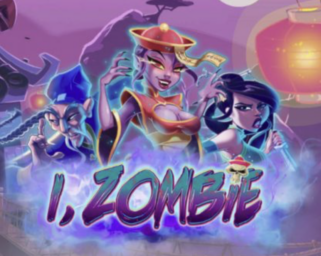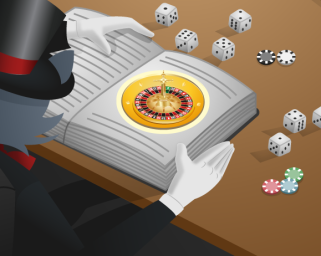How does a banker with an accidental interest in poker beat the world’s greatest poker pros? It helps to be a mathematician and a numbers theorist. It also doesn’t hurt to have a huge bankroll as well. In the richest series of poker games of all time, billionaire banker Andy Beal took on and beat the poker pros.
The Tinkerer

Daniel Andrew “Andy” Beal was born in 1952 in Lansing, Michigan. During his high school years, Andy made a bit of money on the side fixing broken televisions and reselling them. He also installed apartment security systems and started a moving business. From his early dealings with real estate, he started managing rental properties and playing around with minor real estate investments. He bought his first house in Lansing for $6,500 and leased it for $119 per month—all at the age of 19.
Andy Beal’s Fortune
Most of Andy Beal’s fortune was made in real estate investments. By the late 70s, Beal was a proficient house flipper, buying up dilapidated properties, then repairing and reselling them for big money. His first big deal was a $217,500 bid on a Waco, Texas apartment building. He sold the building for more than $1 million a few years later. He also bought a housing project in New Jersey for $25,000, repaired the buildings, and sold them for $3.2 million.
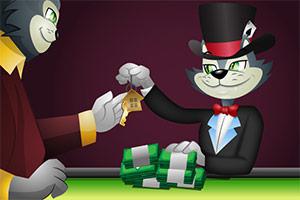
Beal established a bank bearing his name in 1988. Beal Bank operated in Dallas, and Beal opened another branch in Las Vegas in 2004. With a series of well-timed investments, Beal’s wealth grew considerably over the following decade. And during his Vegas years, his interest in mathematics led to him dabbling in poker. And once Andy Beal showed interest in something, he soon started shaking things up and changing them forever.
Landing a Whale
Andy Beal got hooked on poker in the Bellagio in Las Vegas in 2001. At first he started with small investments, just as he had done with real estate. He quickly grew tired of the low stakes tables, and went from the $15/$30 limit Texas hold’em table to the $400/$800 limit table on a winning streak. Once Beal started winning larger sums of money, he attracted the attention of the poker professionals, who were always on the lookout for a whale.
In the poker world, a whale is an amateur poker player with deep pockets and a limited understanding of the game. To the poker regulars on the Vegas Strip, billionaire Beal must have seemed like Moby Dick. Poker pro Todd Brunson, son of poker legend Doyle Brunson, invited Beal to play head to head. After quickly wiping the floor with young Brunson, word got out to the big time players in Bobby’s Room, the high roller room in the Bellagio. But Beal was too big a whale to land individually, so Doyle Brunson, the Godfather of Poker, suggested the pros pool their resources to battle Beal. And with that, the Corporation was born.
Andy Beal vs the Corporation
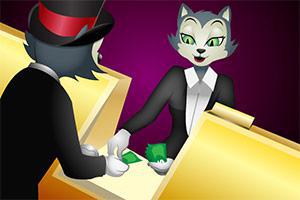
Because of Beal’s deep pockets, the poker pros could easily be ruined during a series of high stakes games. By pooling the money of several professionals together into one fund, the group could nibble away at the whale until it was defenseless. By gathering a group of seven players who each ponied up $1 million each, they stood a better chance of holding out against an onslaught of high bets. However, things didn’t go exactly according to plan.
The original seven members of the Corporation were Doyle Brunson, Chip Reese, Howard Lederer, John Hennigan, Jennifer Harman, David Grey and Chau Giang. The buzz around Vegas increased in anticipation of a showdown. Beal loved a challenge, and was used to winning big in the financial world. His opponents were seasoned poker professionals with a passion for the game, a history of solid financial performance, and a big ax to grind—or a harpoon to throw. How dare this whale swim into their shrimp buffet and eat it all?
Pummeling the Pros
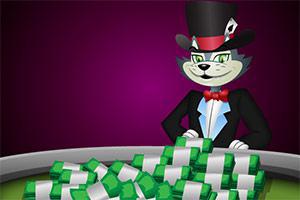
Beal was a smart tactician. He knew that he could lose if the Corporation teamed up on him and worked together to win. So instead of responding to a group challenge, Beal challenge them to a series of one-on-one ‘heads-up’ poker matches. This way, he could knock the players off one at a time. One of the ways he accomplished this was to keep raising the blinds until they hit $100,000/$200,000 per hand. The sheer size of each bet would intimidate even the bravest of the pros. The members of the Corporation were not accustomed to facing multi-million dollar hands of poker individually.
In the early days of the 2001 series of games, Beal beat the pros like a drum, to the tune of $5.3 million. In a tug-of-war that lasted weeks, and eventually years, millions and millions of dollars changed hands in the high roller rooms of Las Vegas. By the end of 2002, the Corporation won back $3.4 million from Beal. But the beatings were not over yet.
On Thursday, May 13, 2004, the “Richest Poker Game of All Time” was played in the Bellagio. Many of the players of the original Corporation’s core were replaced by new blood. One by one, Beal picked them off like a gunslinger at high noon. By the end of the marathon match, a banker from Michigan had won $11.7 million from the world’s greatest group of poker professionals.
Breaking the Banker

The Corporation was on the ropes and fading fast. Over the course of a few years, they lost millions to the upstart banker from Michigan. In order to avoid complete decimation and financial ruin, the pros needed a superhero to save them. Enter poker hero Phil Ivey, “the Tiger Woods of Poker.” Ivey burst onto the poker scene at the turn of the millennium, and he was the first person to beat Amarillo Slim heads-up at the World Series of Poker final table. The Phenom from Jersey whipped one of the best poker players of all time, cementing his reputation as a force to be reckoned with. He later went on to win 10 WSOP gold bracelets, and is one of a very select group of people who has claimed that victory.
Phil Ivey Steps Up
The Corporation brought in Phil Ivey to settle the score. They were down nearly $20 million and they were not happy about it. The Corporation ran like a sports team. Its strength lay in its unity, not its individual players. This meant losing players could be ‘traded’ for fresh ones, much like in professional sports. Over the early matches between Beal and the Corporation, several members were swapped out and new ones added. And with the addition of poker’s biggest rising star, Phil Ivey, the Corporation was hauling out the big guns. All of Beal’s mathematical study and billions proved worthless against the new poker ace. Over a three-day heads-up poker match, Phil Ivey beat Andy Beal out of $16.6 million. And with that, the loser left down, vowing never to play the game again.
So when the chips are down, experience and expertise trump deep pockets. Poker is a game of knowledge, psychology, and confidence. Andy Beal was overconfident, as he had never gone anywhere but up his whole life. But his overconfidence was his undoing. He was thoroughly trounced by the best all-around poker player on the planet. Andy Beal had many opportunities to take the money and run, but his ego wouldn’t let him leave. When playing poker on a tournament level, it’s wise to remember this: there’s always somebody better than you waiting to take your money.



